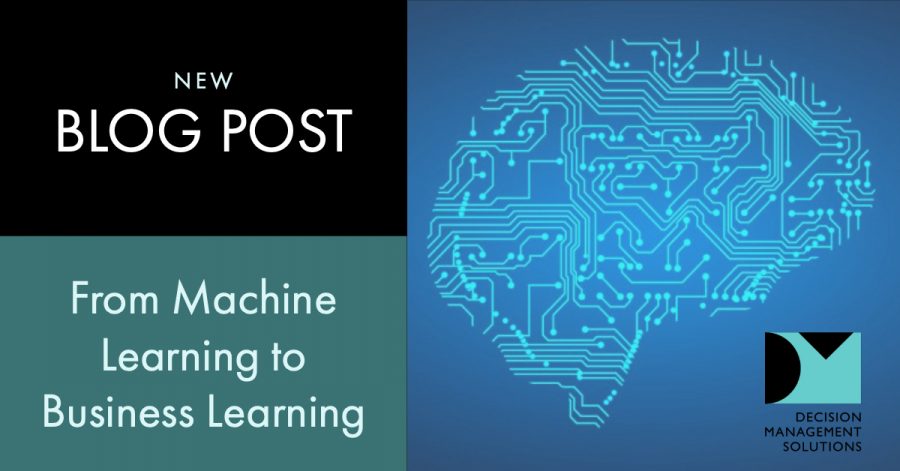Machine learning is the scientific study of algorithms and statistical models that computer systems use to effectively perform a specific task without using explicit instructions, relying on models and inference instead. It is seen as a subset of artificial intelligence.
— Wikipedia
Machine Learning is increasingly widely used to make predictions. Using machine learning makes it easier and faster to build more accurate predictions. Crucially, machine learning models also learn from new data, helping to automatically evolve and future-proof your predictions.
However, machine learning models, like all predictive analytic models, don’t do anything – they just make predictions. To extract business value from them you need to wrap them into a business decision and make that decision differently – better – thanks to the prediction. For instance, decline to auto pay an otherwise perfect claim because the predicted likelihood of fraud is a little too high.
Machine learning algorithms mean the prediction evolves and learns from new data. To create business learning, then, you need to change your business decision based on new data. The algorithm will do a good job of keeping the prediction up to date but you need something more to keep the rest of the decision up to date.
Our experience is that the best data for this is data that lets you understand what the decisions were that you made, how they were impacted by the ML prediction and how well they worked out for you. This data lets you learn what works and what does not so you can improve the decision-making.
Of course, if your ML prediction was fed into an opaque system or shown to a user then you don’t know either of these things. If you have a decision model that shows how the ML prediction fits into the decision making, and that decision model is the basis for a transparent and rules-based execution, then you can capture the decisions made, why that decision was made (the sub-decisions and sub-sub-decisions involved) and link these to the ML prediction and its explanation. Tie the data about how the decision was made to a business outcome, and you can learn all sorts of interesting things, for example:
- What the key factors were in the ML prediction when the ML prediction actually made a difference in your decision making
- Why you didn’t use the ML prediction in some decisions and find the places where the ML prediction is not aligned with the decision you made because of this
- How to provide a coherent, complete explanation to a customer or regulator of the decision you made, how the ML was used in that decision and the factors that drove the ML as well as the rest of the decision
Adding a decision model to your algorithm and logging the decisions you made wraps around your ML environment and turns your machine learning into business learning.
